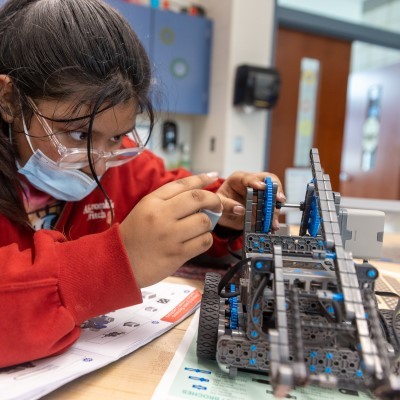Jason Teal recalled being the only black student at Thomas Hooker Elementary School decades ago.
“When another (black) student came into the school, I was so excited I ran up and gave him a hug,” said Teal, vice president of the Connecticut NAACP.
In a state known for its racial and economic gaps, Meriden Public Schools has a reputation for its diverse student body. According to school records, 14 percent of the student population is African-American, 25 percent white, 49 percent Hispanic and 12 percent multi-race.
U.S. Sen. Chris Murphy, D-Connecticut, selected Platt High School to host a roundtable discussion Monday on student diversity that meandered to teacher incentives, affordable housing, real estate agents and zoning laws. Teal was one of those who attended.
Murphy, a member of the U.S. Senate Health, Education, Labor and Pensions Committee, also announced the Strength in Diversity Act of 2019. The bill which passed the House Education and Labor Committee, funds a $120 million deferral grant program to support voluntary community-driven strategies to increase diversity in schools.
“The data is clear, if you go to school in a racially and economically diverse environment, you are going to do better,” Murphy said. “Students are less prone to discriminatory behavior when you are an adult,”
Murphy feels initiatives such as magnet schools and school choice haven’t worked because the numbers of intensely segregated non-white schools have increased since the late 1980s, Murphy said.
The $120 million would help fund planning and implementation grants to school districts for programs and initiatives that improve diversity.
“It’s not going to solve this problem, but it’s an important value statement,” he said. “It’s a challenge in the country we have to talk about. We have to create more school districts like Meriden.”
School Superintendent Mark Benigni praised the school’s partnership with state and local lawmakers.
“As a father of two students in our schools, I could not be more proud of our school system,” he said. “I see it through their lens and my lens as superintendent. When you have a good diverse school system that challenges students, good things happen.”
Benigni pointed to initiatives that challenge minority students, such as higher participation rates in advanced placement classes. They are also given more opportunities to express their opinions about their educational choices.
Students told Murphy about friends and parents who believe suburban schools offer a better learning environments, but some like senior Angel Hart disagreed. Hart has helped organize the school’s Say Something chapter, which won the school a National Award last year. The school’s senate has also seen an increase in members.
“It starts with a hello campaign,” Hart said. “It ends social isolation and segregation and brings the community closer together.”
Other students said clubs and sports help students to learn to work together and get to know each other and their cultures.
Mayor Kevin Scarpati said Meriden’s economically diverse housing stock has helped create the diversity in its schools.
“We (Meriden) have diverse housing and are doing away with large public housing and replacing it with mixed-income housing ” Scarpati said. “I heard over and over again, this will not work. But it has worked. We now need other towns to step up. A diverse housing stock has worked for us.”
Scarpati said the city informs realtors about city initiatives and school accomplishments to help them better sell the city to new homeowners.
Students and educators also lamented the lack of minority teachers in Meriden and statewide. Several students said they never had or could count on one hand the numbers of minority teachers.
The value of more role models to students of color is understated, educators said.
“Diversifying our workforce is a goal of the Board or Education and we track the optional race reporting of new certified hires to district,” said Assistant Superintendent Louis Bronk.
The district has increased its minority hiring from 8.4 percent in 2019, to 24 percent in 2020, according to Bronk.
But challenges remain. There are financial barriers for paraprofessionals who want to become teachers and districts are fighting each other to get the most recent graduates, Benigni said.
Part of the solution could come from incentive packages that help teachers repay student loans or for housing.
Murphy suggested some of the solutions come from rethinking school districts.
“One of the ways to change diversity is changing the way children go to school,” Murphy said. “We pack 169 districts into a state the size of San Diego. There is nothing different about the biology of a kid growing up in one zip code than a kid growing up in another zip code.”
By Mary Ellen Godin, Record-Journal staff





